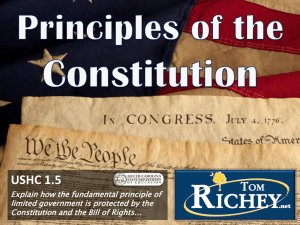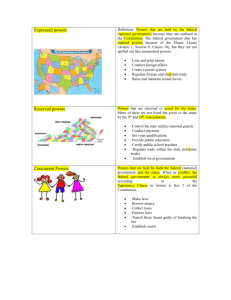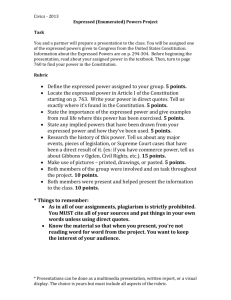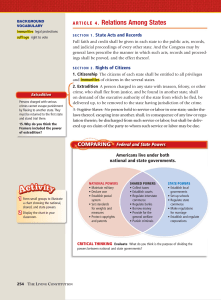Division of Powers - Goshen Community Schools
advertisement
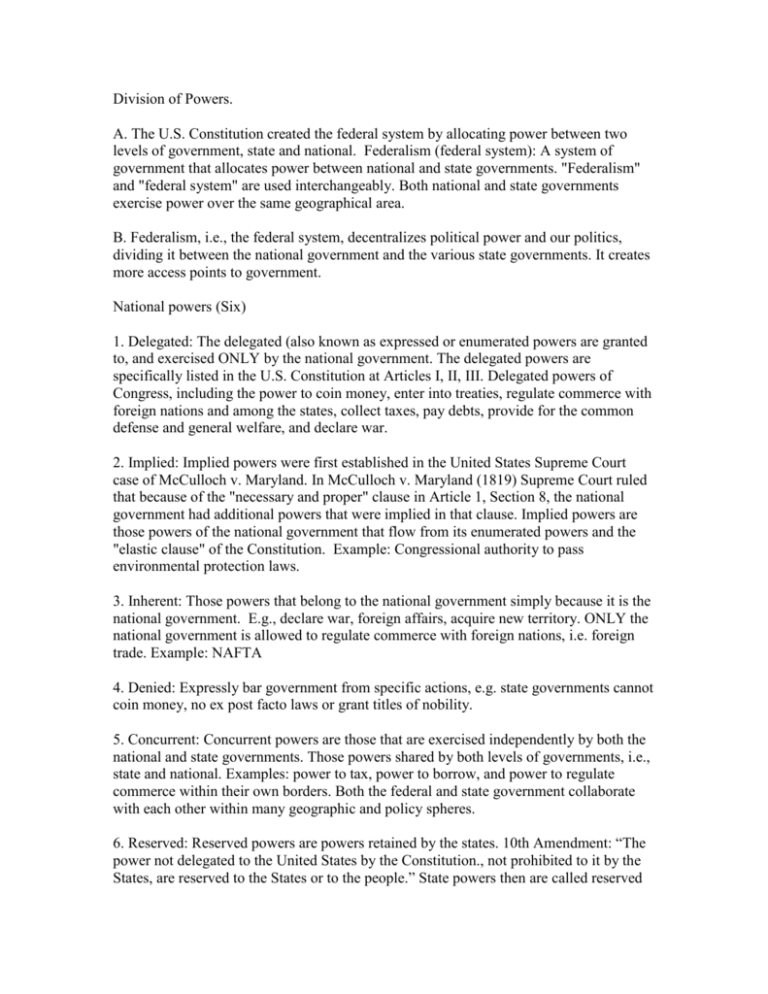
Division of Powers. A. The U.S. Constitution created the federal system by allocating power between two levels of government, state and national. Federalism (federal system): A system of government that allocates power between national and state governments. "Federalism" and "federal system" are used interchangeably. Both national and state governments exercise power over the same geographical area. B. Federalism, i.e., the federal system, decentralizes political power and our politics, dividing it between the national government and the various state governments. It creates more access points to government. National powers (Six) 1. Delegated: The delegated (also known as expressed or enumerated powers are granted to, and exercised ONLY by the national government. The delegated powers are specifically listed in the U.S. Constitution at Articles I, II, III. Delegated powers of Congress, including the power to coin money, enter into treaties, regulate commerce with foreign nations and among the states, collect taxes, pay debts, provide for the common defense and general welfare, and declare war. 2. Implied: Implied powers were first established in the United States Supreme Court case of McCulloch v. Maryland. In McCulloch v. Maryland (1819) Supreme Court ruled that because of the "necessary and proper" clause in Article 1, Section 8, the national government had additional powers that were implied in that clause. Implied powers are those powers of the national government that flow from its enumerated powers and the "elastic clause" of the Constitution. Example: Congressional authority to pass environmental protection laws. 3. Inherent: Those powers that belong to the national government simply because it is the national government. E.g., declare war, foreign affairs, acquire new territory. ONLY the national government is allowed to regulate commerce with foreign nations, i.e. foreign trade. Example: NAFTA 4. Denied: Expressly bar government from specific actions, e.g. state governments cannot coin money, no ex post facto laws or grant titles of nobility. 5. Concurrent: Concurrent powers are those that are exercised independently by both the national and state governments. Those powers shared by both levels of governments, i.e., state and national. Examples: power to tax, power to borrow, and power to regulate commerce within their own borders. Both the federal and state government collaborate with each other within many geographic and policy spheres. 6. Reserved: Reserved powers are powers retained by the states. 10th Amendment: “The power not delegated to the United States by the Constitution., not prohibited to it by the States, are reserved to the States or to the people.” State powers then are called reserved powers. In our federal system, the United States Constitution ultimately grants the powers of the state governments. Most significant reserved power given to states is the power to determine the qualifications for voting. Courts have interpreted reserve powers as falling into three categories: a. Public education b. Police powers; criminal laws. For example, as a result of our federal form of government, the death penalty in the United States varies substantially state by state. c. Right to regulate commerce within a state, intrastate commerce.



